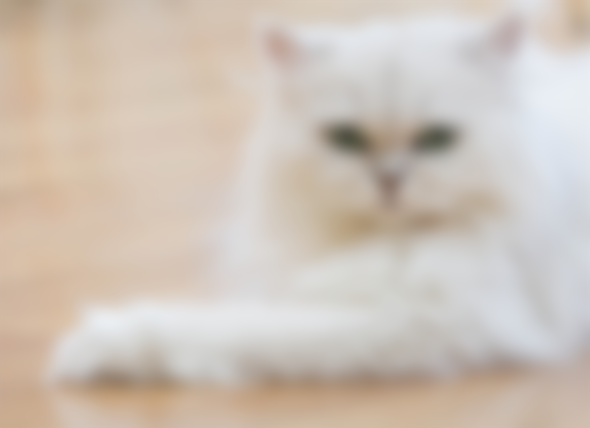
More About This Breed
History
The Persian is an old breed. To those who love this elegant cat, it will come as no surprise that the longhaired beauty originated in the cradle of civilization: Mesopotamia, which was later known as Persia and is now modern-day Iran. The breed’s long hair was probably the result of a natural mutation, and its striking appearance attracted the attention of 17th-century Italian nobleman and world traveler Pietro Della Valle, who is credited with bringing the first longhaired cats to Europe in 1626. At that time, the cats had shiny, silky gray fur, but thanks to selective breeding Persians are now found in a kaleidoscope of colors, including bi-color (a color plus white).
Until the late 19th century, when breeding and showing cats became popular, longhaired cats from Persia, Turkey, Afghanistan and other exotic locales were known simply as “Asiatic” cats and were often bred together. At the Crystal Palace cat show in 1871, Persian-type cats were among the breeds exhibited. They were popular pets of the time and had a special cachet because of Queen Victoria’s fondness for the breed. Even in the Victoria era, association with a “celebrity” ensured an animal’s desirability.
Through selective breeding, cat fanciers began to mold the Persian to its present-day appearance. They bred cats to have a round head, short face, snub nose, chubby cheeks, small, rounded ears, big eyes, and a sturdy body. Their fur was longer than that of the Angora cat, and they had shorter legs. Soon, the Persians surpassed the Angoras in popularity.
In the United States, where they were first imported in the late 19th century, they also became favorites, edging out the longhaired Maine Coon cat, which had once held pride of place as an American sweetheart. In the little more than a century since, the Persian has become the most beloved cat breed in the world, prized for its beautiful appearance and sweet personality.
Size
This is a medium-size cat. Persians usually have a weight range of 7 to 12 pounds.
Personality
The dignified and docile Persian is known for being quiet and sweet. She is an ornament to any home where she can enjoy sitting in a lap—surely her rightful place—being petted by those who are discerning enough to recognize her superior qualities, and playing house with kind children who will gently comb her hair, wheel her around in a baby buggy, then serve her tea at their parties. Persians are affectionate but discriminating. They reserve their attention for family members and those few guests whom they feel they can trust.
Loud environments aren’t a Persian’s style; they are sedate cats who prefer a serene home where little changes from day to day. With large, expressive eyes and a voice that has been described as soft, pleasant and musical, Persians let their simple needs be known: regular meals, a little playtime with a catnip mouse or feather teaser, and lots of love, which they return tenfold. This is one cat who is unlikely to climb up your curtains, jump on your kitchen counters, or perch on top of your refrigerator. She is perfectly happy to rule her domain from the floor or more accessible pieces of furniture. When you are at work or are busy around the house, the Persian is content to adorn a chair, sofa or bed until you are free to admire her and give her the attention she willingly receives but never demands.
Health
Both pedigreed cats and mixed-breed cats have varying incidences of health problems that may be genetic in nature. Although they are beautiful and sweet, Persians are prone to a number of potential health problems, most commonly related to their facial structure:
Breathing difficulty or noisy breathing caused by constricted nostrils
Dental malocclusions, meaning the teeth don’t mesh well together
Excessive tearing
Eye conditions such as cherry eye and entropion
Heat sensitivity
Polycystic kidney disease, for which a genetic test is available
Predisposition to ringworm, a fungal infection
Seborrhea oleosa, a skin condition that causes itchiness, redness and hair loss
Care
The most important thing to understand about caring for a Persian is the need for daily grooming. That long, beautiful coat doesn’t stay clean and tangle-free on its own. It must be gently but thoroughly combed and brushed every day, and regular bathing—at least once a month—is a good idea.
Another factor to consider is the litter box issue. Litter may become lodged in a Persian’s paws or coat. If the cat and the litter box aren’t kept scrupulously clean, a Persian is more likely than most to just stop using the box.
Excessive tearing can be a problem in this breed, so wipe the corners of the eyes clean daily to prevent under-eye stains from forming. Brush the teeth to prevent periodontal disease. Daily dental hygiene is best, but weekly brushing is better than nothing.
It’s a good idea to keep a Persian as an indoor-only cat. She’s not a scrapper and would fare poorly against other cats, dogs, coyotes and the other dangers that face cats who go outdoors. Nor is the Persian’s coat made for shedding dirt, leaves and stickers. Letting a Persian outdoors just means that much more time spent grooming the cat. Persians who go outdoors also run the risk of being stolen by someone who would like to have such a beautiful cat without paying for it.
Coat Color And Grooming
The Persian has a distinctive appearance: a large, round head; large, round eyes; a short nose; full cheeks; and small ears with rounded tips. The head is supported by a short, thick neck and a deceptively sturdy, muscular body—a type known as “cobby.” A Persian’s legs are short, thick and strong with large, round, firm paws. The tail is short but proportional to the length of the cat’s body.
A long, thick, shiny coat with a fine texture completes the Persian’s look. It’s long all over the body and includes an immense ruff around the neck, a deep frill between the front legs, long ear and toe tufts, and a full “brush,” or tail.
Persians can come in different “looks.” Some, known as Peke-face Persians, have an extremely flat face. Think twice about the breathing problems such a cat might have before deciding to get one. “Doll-face” Persians are said to have a more old-fashioned appearance, with a face that is not as flat as the show Persian or the Peke-face Persian.
Persians of all stripes stand out for their infinite variety of coat colors and patterns. Imagine, if you will, seven solid color divisions—white, blue, black, red, cream, chocolate and lilac—plus silver and golden division colors of chinchilla and shaded silver or golden and blue chinchilla and blue shaded silver or golden; and then there are the shaded, smoke, tabby, calico, particolor and bicolor divisions. That’s not counting the various pointed patterns of the Himalayan. Eye color is related to coat color. For instance, white Persians have deep blue or brilliant copper eyes; other solid-colored Persians have brilliant copper eyes; silver and golden Persians have green or blue-green eyes; and so on.
Children And Other Pets
Persians aren’t the best choice for a houseful of boisterous children and dogs, but they have no objection to being the object of a gentle child’s attentions or to rubbing along with a friendly dog who doesn’t chase them or otherwise cause them anxiety.

hang cutieeeee